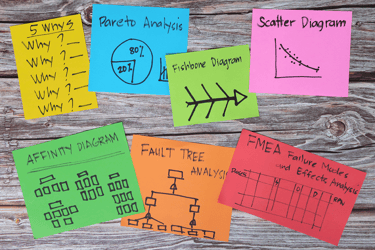The Packaging Industry's Sustainability Challenge: Why ERP Systems Are Essential for Success A straightforward guide to navigating sustainability regulations across folding carton, flexible...
The Importance of a Reliable Cost Map in the Packaging Industry
Effective financial resource management is critical to success in the competitive packaging market.
A cost map becomes the compass that guides companies toward informed and strategic decision-making.
In this blog, we will explore how to create an effective cost map to optimize the financial health of your project or business within the packaging and printing industry.
Contents
What is a Cost Map?
A cost map is more than just a simple list of expenses. It is a visual and structured representation of all costs associated with your operation. From raw material sourcing and equipment maintenance to administrative overhead and logistics, a cost map allows you to see the full financial landscape of your operation. This clarity enables packaging companies to identify inefficiencies, prioritize improvements, and make strategic choices with confidence.
How to Create a Cost Map
-
Identify All Costs
When starting a project, identify all possible costs. For example, in a new product line, account for machine setup time, substrate waste, shipping variations, and promotional campaigns. -
Classify Costs Clearly
Classify costs into meaningful categories. For instance, separate variable costs, such as raw materials, from fixed costs, such as production space rent. -
Cost Allocation to Activities
Use allocation methods to link specific costs to activities or processes. In a software development project, for example, you could assign research and development costs to specific functions. -
Forecast Future Cost
Use historical data and industry trends to anticipate cost fluctuations. Consider how raw material pricing, labor shifts, or regulatory changes could impact your cost structure over time.
Creating Cost Maps in the Packaging Industry
Building a reliable cost map manually can be time-consuming and error-prone. Without software support, companies often rely on disconnected spreadsheets and inconsistent data inputs, increasing the risk of inaccurate insights and missed optimization opportunities.
However, forward thinking companies like Kawagraf and Emibra - have shown that using MES Applications like integrated production planning & estimating and shop floor data collection simplifies cost mapping and enhances visibility across operations.
One flexible packaging converter reduced production costs by 15% after implementing a structured cost map and identifying excess spending in setup and material usage. Emibra’s case shows how combining real-time shop floor data and job costing helps avoid financial blind spots.
Tips for Keeping Your Cost Map Updated
-
Review Costs Frequently
Ideally, review your cost map at least monthly—or even weekly if you're in a high-variation production environment. You can use an automation tool, for example, that allows you to configure alerts or dashboards to flag when cost KPIs exceed thresholds.
-
Integrate Your Systems
Keep cost data synchronized across departments using interconnected tools for estimating, scheduling, production monitoring, and inventory control. This reduces data duplication and improves decision-making. - Choose a Partner That Supports Continuous Improvement
Your software provider should offer more than tools—they should help you interpret the data, spot inefficiencies, and evolve your cost strategies. Look for partners with industry-specific expertise, like ePS, who combine advanced features with consulting-level support.
Conclusion
A well-constructed cost map is an invaluable tool for financial decision-making in the packaging industry. Through data visual, and precise data, businesses can chart their path toward financial efficiency and sustainable success.
Start mapping your route to financial success today!



